Fresh off another disappointment in the playoffs, the Ravens returned to roster-building work ahead of another push at a Lamar Jackson-era Super Bowl berth. For the first time since 2021, Baltimore returned both of its coordinators, and the coaching staff as a whole had significantly less turnover than recent years. Free agency was another situation, as the Ravens’ pricey roster left little cap space to do too much work.
GM Eric DeCosta prioritized the most important of his free agents – left tackle Ronnie Stanley – and let several others walk to collect more compensatory picks in the 2026 draft. The Ravens did add some big names at discount prices in cornerback Jaire Alexander and wide receiver DeAndre Hopkins before landing safety Malaki Starks and edge rusher Mike Green in April’s draft. The result is another talented roster that will enter the year with Super Bowl expectations once again.
Extensions and restructures:
- Signed S Kyle Hamilton to a four-year, $100.4MM contract ($48.02MM guaranteed)
- Signed RB Derrick Henry to a two-year, $30MM extension ($25MM guaranteed)
- Signed WR Rashod Bateman to a two-year, $25MM extension ($16.5MM guaranteed)
- Added $500K of per-game roster bonuses to OLB Kyle Van Noy‘s contract
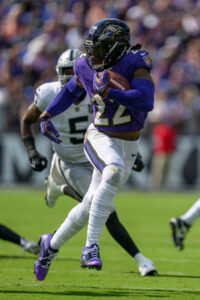 Extending Henry off his outstanding 2024 season was an early-offseason priority for the Ravens. Saquon Barkley’s market-resetting extension with the Eagles (two years, $41.2MM) seemed to prolong negotiations and increase Henry’s price tag.
Extending Henry off his outstanding 2024 season was an early-offseason priority for the Ravens. Saquon Barkley’s market-resetting extension with the Eagles (two years, $41.2MM) seemed to prolong negotiations and increase Henry’s price tag.
He ultimately signed a two-year extension for $5.6MM less per year than Barkley’s deal; this contract gave the Ravens an out after 2026 if needed. However, Henry shows no sign of slowing down as he entered his 30s. He could see this contract out and retire a Raven. While conventional logic suggests the odds Henry plays out this through-2027 contract are not great — after all, he has a 539-carry lead over the next-closest active running back (Joe Mixon) — but the two-time rushing champion has continued to defy expectations.
The Ravens hedged on Henry last year, bringing him on a two-year deal worth $16MM. That contract gave Baltimore an easy out after Year 1. The Ravens, who pursued Henry in 2023, then watched him dominate to the tune of 1,921 yards and 16 touchdowns. Henry became only the second running back this century to gain at least 1,900 yards and fail to land a first-team All-Pro nod, joining ex-Packer Ahman Green (2003). It took a historic Barkley stampede to deny Henry a second first-team All-Pro honor.
This represents the largest deal for any 30-something running back, highlighting Henry’s longevity and Baltimore’s faith he can keep delivering into his early 30s. The ex-Tennessee mainstay created a historic power-speed combo with Lamar Jackson, and Keaton Mitchell‘s return in earnest from a 2023 ACL tear should only enhance the NFL’s most consistent rushing attack.
The contract guarantees Henry’s 2026 compensation, creating a decision — perhaps for both player and team — in 2027, when the bulldozing RB’s $11MM base salary is nonguaranteed. Already past $74MM in career earnings, the future Hall of Famer will push for $100MM as a result of this extension.
 Bateman signed an extension last offseason, partially due to a quirk with his rookie contract. After a career-best year in 2024, he came back for a raise. The Ravens gave him an opportunity to explore his trade market, and the Cowboys inquired before pivoting to George Pickens. But a Bateman-Baltimore pact eventually came together at $12.5MM AAV, still quality value for a receiver of his caliber.
Bateman signed an extension last offseason, partially due to a quirk with his rookie contract. After a career-best year in 2024, he came back for a raise. The Ravens gave him an opportunity to explore his trade market, and the Cowboys inquired before pivoting to George Pickens. But a Bateman-Baltimore pact eventually came together at $12.5MM AAV, still quality value for a receiver of his caliber.
Overall, the agreement brings his terms to just under $50MM over the next five years. The diversity of the Ravens’ offense may cap the 2021 first-rounder’s volume, but he can still be an efficient weapon, especially as one of Jackson’s favorite targets downfield and in the red zone.
Baltimore reportedly explored extensions with a number of their 2022 draftees, including Tyler Linderbaum, Isaiah Likely, and Travis Jones, but they only finalized a pre-Week 1 accord with Hamilton. At $25.1MM per year, Hamilton’s deal dramatically reset the safety market and made him the third-highest-paid defensive back in the league. His AAV represented about 9.0% of the salary cap, similar to the 2022 extension signed by Derwin James after he established himself as the best safety in the league at the time.
Hamilton seems to have done the same. He was a dangerous nickel defender as a rookie before breaking out as a versatile defensive weapon in 2023. In 2024, his move to a more traditional safety role midway through the season revived Baltimore’s pass defense, proving his ability to affect opposing offenses at all levels of the field. Getting the extension done with two years left on Hamilton’s contract will keep him in Baltimore through 2030 for an effective AAV of $20.7MM.
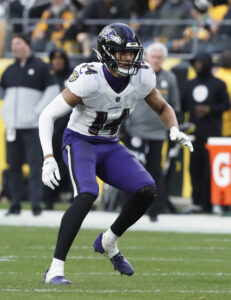 Dating back to Ed Reed‘s dominant run, the Ravens have placed considerable value on safeties. Although this position has seen its value yo-yo in the modern game, Baltimore has kept adding talent here — from Eric Weddle to Earl Thomas to Marcus Williams. Not all of the moves have worked out, but Hamilton is easily the best Ravens safety decision since Reed. This contract reflects a belief Hamilton’s prime will be transformative, as the deal comes in more than $3MM north of where Antoine Winfield Jr. and Kerby Joseph moved the market over the past year-plus.
Dating back to Ed Reed‘s dominant run, the Ravens have placed considerable value on safeties. Although this position has seen its value yo-yo in the modern game, Baltimore has kept adding talent here — from Eric Weddle to Earl Thomas to Marcus Williams. Not all of the moves have worked out, but Hamilton is easily the best Ravens safety decision since Reed. This contract reflects a belief Hamilton’s prime will be transformative, as the deal comes in more than $3MM north of where Antoine Winfield Jr. and Kerby Joseph moved the market over the past year-plus.
Only 24, Hamilton is already a two-time All-Pro. The Ravens locked in some cost certainty by extending Hamilton in his fourth NFL offseason. They did the same with Marlon Humphrey in 2020. Hamilton receives money early as well, and the staggering value convinced the Notre Dame alum to commit ahead of Year 4.
The Ravens, who now have two $20MM-per-year players on defense (in Hamilton and Roquan Smith), were also looking to get ahead of Lamar Jackson’s contract with two $74.5MM cap hits awaiting them in 2026 and 2027, but talks gained little traction. That will likely be Baltimore’s top priority next offseason.
Free agency additions:
- DeAndre Hopkins, WR. One year, $5MM ($5MM guaranteed)
- Cooper Rush, QB. Two years, $6.2MM ($4MM guaranteed)
- Jaire Alexander, CB. One year, $4MM, ($4MM guaranteed)
- Joseph Noteboom, OT. One year, $2MM, ($2MM guaranteed)
- Chidobe Awuzie, CB. One year, $1.255MM ($1.26MM guaranteed)
- John Jenkins, NT. One year, $1.75MM, ($325K guaranteed)
- Jake Hummel, LB. One year, $1.2MM, ($100K guaranteed)
The Ravens have a history of adding Lamar Jackson’s desired receivers. They drafted Marquise Brown on Jackson’s recommendation in 2019 and aggressively pursued Odell Beckham Jr. in free agency in 2023 as they tried to get their franchise QB to sign an extension. This year, DeCosta signed another rumored name on Jackson’s wishlist: Hopkins.
 Limited by the Titans’ poor quarterback play last year, Hopkins started to show signs of his former self after being traded to the Chiefs at the deadline. The three-time All-Pro’s $5MM deal features another $1MM in incentives. The Ravens are certainly not adding the Texans’ version of Hopkins, as he has not booked a Pro Bowl invite since 2020 and managed only three catches for 29 yards during the Chiefs’ three-game postseason. But the big-bodied receiver will be positioned as a tertiary target in an offense that has higher-priority players.
Limited by the Titans’ poor quarterback play last year, Hopkins started to show signs of his former self after being traded to the Chiefs at the deadline. The three-time All-Pro’s $5MM deal features another $1MM in incentives. The Ravens are certainly not adding the Texans’ version of Hopkins, as he has not booked a Pro Bowl invite since 2020 and managed only three catches for 29 yards during the Chiefs’ three-game postseason. But the big-bodied receiver will be positioned as a tertiary target in an offense that has higher-priority players.
Hopkins joins Zay Flowers and Rashod Bateman to form a trio pairing youth with experience (and one now housing three first-round picks). The gravity of Baltimore’s rushing game will give Hopkins more one-on-one opportunities to work his veteran route-running and skills at the catch point. The Ravens are hoping Hopkins can be a difference-maker for their offense in key situations. At a minimum, the NFL’s active leader in receiving yards (12,965) would appear to be an upgrade over last year’s WR3, Nelson Agholor.
A longtime backup to Dak Prescott in Dallas, Rush was not seen as a schematic fit behind Jackson. Instead, the team touted his winning record as a starter and veteran experience as reasons he could run the offense if needed. He’s also younger with a more live arm than Josh Johnson, the 2024 backup. Obviously, though, the Ravens will only want Rush on the field if the game is already won in a blowout.
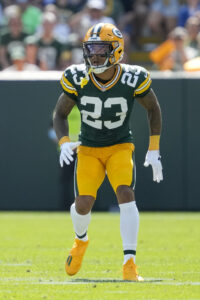 Alexander is known just as much for his talent as his injuries at this point. With only 34 appearances since 2021 – and three seasons with seven games or fewer – the Packers understandably wanted him to take a pay cut from the $17.5MM he was due in 2025. Alexander refused, and his contract remained an obstacle in trade talks with multiple teams, including the Bills. Green Bay eventually cut him loose in June, making the former first-round pick an enticing late addition to the free agency crop.
Alexander is known just as much for his talent as his injuries at this point. With only 34 appearances since 2021 – and three seasons with seven games or fewer – the Packers understandably wanted him to take a pay cut from the $17.5MM he was due in 2025. Alexander refused, and his contract remained an obstacle in trade talks with multiple teams, including the Bills. Green Bay eventually cut him loose in June, making the former first-round pick an enticing late addition to the free agency crop.
The Ravens’ need at cornerback and Alexander’s longstanding friendship with Jackson dating back to their Louisville days made Baltimore an obvious destination. Jackson even told his general manager to “go get” Alexander during a spring press conference. DeCosta obliged, signing Alexander — who also considered the Dolphins and Falcons — just over a week after he hit the market.
As with Hopkins, the Ravens seemed to get a steal by nabbing Alexander for $4MM (plus $2MM in play time incentives), but he still carries significant injury risk. It’s no guarantee the eighth-year vet can stay healthy for a whole season, but he adds another elite talent to a Ravens secondary that was already among the best in the league.
 The rest of the Ravens’ free agency signings filled some of the holes in their depth left by their offseason departures. Noteboom arrived as an inexpensive veteran swing tackle to replace Josh Jones. Awuzie was a Titans cap casualty with guaranteed salary remaining on his deal, allowing the Ravens to sign him for the veteran minimum.
The rest of the Ravens’ free agency signings filled some of the holes in their depth left by their offseason departures. Noteboom arrived as an inexpensive veteran swing tackle to replace Josh Jones. Awuzie was a Titans cap casualty with guaranteed salary remaining on his deal, allowing the Ravens to sign him for the veteran minimum.
With 81 career starts, Awuzie is slightly overqualified for a No. 4 CB role. But he has also missed significant time due to injury in two of the past three seasons. The Titans dropped Awuzie’s three-year, $36MM contract after he missed nine games due to a nagging groin injury. This came two years after an ACL tear stalled the ex-Cowboys draftee’s momentum. Having started in Super Bowl LVI with the Bengals, Awuzie was not a full-time starter in his final Cincinnati season. Considering Alexander’s injury history, however, Awuzie could represent important insurance.
Jenkins, who started 34 games for the Raiders in the last two years, will add nose tackle depth behind Travis Jones after Michael Pierce’s retirement in March. Needing to revamp an underwhelming special teams unit, the Ravens added former Rams special teams ace Jake Hummel on a cheap deal.
Re-signings
- Ronnie Stanley, LT. Three years, $60MM ($44MM guaranteed)
- Patrick Ricard, FB. One year, $2.873MM, ($2.87MM guaranteed)
- Tylan Wallace, WR. One year, $2.1MM ($1.35MM guaranteed)
- Ar’Darius Washington, S. One year, $3.26MM (RFA tender)
- Ben Cleveland, RG. One year, $1.17MM
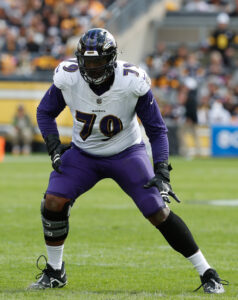 The No. 6 pick in the 2016 draft, Stanley is coming off a resurgent year — his best since a devastating ankle injury in 2020. The nine-year Baltimore left tackle only played 25 games in the next three seasons and couldn’t return to his elite form even when he was healthy. The Ravens stood by Stanley (and his massive contract), but they got him to take a pay cut in 2024 to ease their cap burden and prove that he was back to full health.
The No. 6 pick in the 2016 draft, Stanley is coming off a resurgent year — his best since a devastating ankle injury in 2020. The nine-year Baltimore left tackle only played 25 games in the next three seasons and couldn’t return to his elite form even when he was healthy. The Ravens stood by Stanley (and his massive contract), but they got him to take a pay cut in 2024 to ease their cap burden and prove that he was back to full health.
The nine-year veteran responded with the first full season of his career as well as his second Pro Bowl selection. Stanley wasn’t a dominant pass protector, but he lost slowly and consistently gave Jackson enough time to make a play. He also played a huge role in the Ravens’ bulldozing rushing offense leading runs to the weak side that regularly gashed opposing defenses.
As a result, Stanley wasn’t just the Ravens’ biggest pending free agent, but one of the most coveted league-wide. PFR’s No. 4-ranked free agent, Stanley drew significant interest from the Patriots, Chiefs, and Commanders, but he took $20MM per year to stay in Baltimore. The Ravens convinced Stanley to re-sign two days before the legal tampering period.
Not having to negotiate against other teams became a big win for Baltimore. Considering the price tag of the offensive tackles who hit free agency, Stanley gave the Ravens a hometown discount instead of auctioning his services off to the highest bidder. Stanley, 31, received guaranteed compensation in 2025 and ’26. His guarantee at signing surpassed Alaric Jackson‘s Rams re-up and Dan Moore Jr.‘s big-ticket Titans free agency accord.
 Ricard has been a blocking chess piece in the Ravens’ offense for years, but he was particularly imposing leading the way for Derrick Henry last year. Few teams even use a player with his skillset, making a stay in Baltimore an easy decision. The Ravens re-signed Ricard to a veteran salary benefit contract that pays him $2.87MM in cash with a cap hit of $1.42MM.
Ricard has been a blocking chess piece in the Ravens’ offense for years, but he was particularly imposing leading the way for Derrick Henry last year. Few teams even use a player with his skillset, making a stay in Baltimore an easy decision. The Ravens re-signed Ricard to a veteran salary benefit contract that pays him $2.87MM in cash with a cap hit of $1.42MM.
The insertion of Washington into the starting lineup was an underrated part of the Ravens’ defensive turnaround last year. He combined with Kyle Hamilton to stabilize the pass defense and added three turnovers in his 10 starts. The Ravens explored an extension before placing the right of first refusal RFA tender on Washington in the offseason.
Washington received little interest on the market and ultimately signed the one-year tag before tearing his Achilles while training in the offseason. The 25-year-old safety will likely miss the entire season, though he and the team are holding out hope for a late return.
Notable losses:
- Nelson Agholor, WR
- Jalyn Armour-Davis, CB
- Chris Board, LB
- Beau Brade, S
- Malik Harrison, LB
- Josh Johnson, QB
- Josh Jones, T
- Arthur Maulet, CB (released)
- Patrick Mekari, OL
- Brandon Stephens, CB
- Justin Tucker, K (released)
- Tre’Davious White, CB
- Marcus Williams, S (post-June 1 cut)
 Mekari signed with the Jaguars, while Stephens joined the Jets. Mekari was the rare five-position lineman in Baltimore who was especially important at tackle during Stanley’s injury struggles. He emerged as the starting left guard in 2024 and his performance in a contract year made him a luxury Baltimore couldn’t afford. The Jags are planning to keep Mekari at guard, though his position flex would give Liam Coen‘s team options.
Mekari signed with the Jaguars, while Stephens joined the Jets. Mekari was the rare five-position lineman in Baltimore who was especially important at tackle during Stanley’s injury struggles. He emerged as the starting left guard in 2024 and his performance in a contract year made him a luxury Baltimore couldn’t afford. The Jags are planning to keep Mekari at guard, though his position flex would give Liam Coen‘s team options.
Stephens was a 2021 third-round pick who converted from cornerback to safety upon arriving in the pros. He stepped into a starting role as a rookie but moved back to outside cornerback full-time by 2023. Stephens seemed to take a step forward that year, but he regressed in 2024 as a weak link in the secondary. Baltimore may have been looking to upgrade at both positions anyway, and the team collected two 2026 comp picks as a result. Stephens will replace D.J. Reed as the Jets’ boundary starter opposite Sauce Gardner.
Marcus Williams put up the worst performance of his career in 2024, consistently being caught out of place against opposing deep balls. He was eventually benched after Week 10 and stayed sidelined as a healthy scratch from Week 13 onwards.
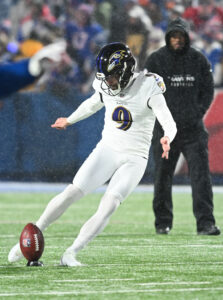 It was a somewhat mystifying season from Williams, who struggled with a few injuries in 2022 and 2023 but played well when healthy. But last year, he and fellow veteran safety Eddie Jackson, who was released after Week 11, could not effectively communicate and cover on the back end of the defense. The Ravens altered his contract to help their cap situation, but the post-June 1 designation will leave just more than $6MM in dead money in both 2025 and ’26.
It was a somewhat mystifying season from Williams, who struggled with a few injuries in 2022 and 2023 but played well when healthy. But last year, he and fellow veteran safety Eddie Jackson, who was released after Week 11, could not effectively communicate and cover on the back end of the defense. The Ravens altered his contract to help their cap situation, but the post-June 1 designation will leave just more than $6MM in dead money in both 2025 and ’26.
After a down year statistically and more than a dozen allegations of sexual misconduct during massage therapy sessions, the Ravens moved on from Tucker. They did so after drafting his successor in Tyler Loop. Tucker was the only remaining member from the Ravens’ 2012 Super Bowl team, and for the first time since 2011, he won’t be kicking in Baltimore.
Tucker, 35, is still the NFL’s all-time leader in field goal conversion rate (89.1%), but he drew a 10-game suspension to start the 2025 season. He has not signed with another team yet. It is certainly worth wondering, given the suspension length and his choppy performance last season, if another team will take a chance on the likely Hall of Fame-bound specialist.
Draft:
- Round 1, No. 27: Malaki Starks (S, Georgia) (signed)
- Round 2, No. 59: Mike Green (OLB, Marshall) (signed)
- Round 3, No. 91: Emery Jones (T, LSU) (signed)
- Round 4, No. 129: Teddye Buchanan (LB, Cal) (signed)
- Round 5, No. 141 (from Titans): Carson Vinson (T, Alabama A&M) (signed)
- Round 6, No. 178 (from Titans): Bilhal Kone (CB, Western Michigan) (signed)
- Round 6, No. 186 (from Jets): Tyler Loop (K, Arizona) (signed)
- Round 6, No. 203: LaJohntay Wester (WR, Colorado) (signed)
- Round 6, No. 210: Aeneas Peebles (DT, Virginia Tech) (signed)
- Round 6, No. 212: Robert Longerbeam (CB, Rutgers) (signed)
- Round 7, No. 243: Garrett Dellinger (G, LSU) (signed)
Starks felt like the Ravens’ ideal first-round pick throughout the draft process. He brought the intangibles prized by Baltimore’s front office and coverage skills that would likely be a great fit next to Hamilton. It was only a question of Starks getting to the No. 27 pick. He did, and the Ravens once again landed one of their top-ranked prospects late in the first round. Starks impressed the Ravens’ coaching staff throughout camp. By all accounts, he has looked the part, but the rubber will meet the road once the regular season starts.
 Green was a controversial pick after falling out of the first round due to multiple allegations of sexual assault in his past. It was doubly notable to see the Ravens stop his fall at No. 59 despite still having Justin Tucker on the roster. From a football perspective, it was another best-player-available pick by DeCosta, who added an uber-athletic pass rusher with elite upside.
Green was a controversial pick after falling out of the first round due to multiple allegations of sexual assault in his past. It was doubly notable to see the Ravens stop his fall at No. 59 despite still having Justin Tucker on the roster. From a football perspective, it was another best-player-available pick by DeCosta, who added an uber-athletic pass rusher with elite upside.
Green dominated at times in the preseason and could be the kind of high-impact edge rusher Baltimore hasn’t seen since Terrell Suggs. The Ravens have struggled to find long-term pieces here post-Matt Judon and still carry some questions at OLB entering the season.
Though, the presences of Green, Odafe Oweh and Kyle Van Noy will minimize the prospect of the Ravens making yet another late-summer/early-fall veteran addition at this spot. Oweh being in a contract year and Van Noy entering an age-34 season does point to more action at this position during the 2026 offseason.
The Ravens added LSU right tackle Emery Jones in the third round, but he’s still recovering from post-Combine surgery and has yet to step on the practice field. Baltimore may have been hoping that he could push for a starting guard job as a rookie; now, he will likely be targeting a role in 2026, potentially as Daniel Faalele’s successor at right guard.
As mentioned above, Tyler Loop is set to take over the kicking job with Tucker off the roster. Loop fended off undrafted rookie John Hoyland early in training camp and will be under pressure from a team (and fanbase) that grew accustomed to excellent, clutch, long-range kicking over the last decade.
Other
- Declined center Tyler Linderbaum’s fifth-year option ($23.4MM for 2026)
- Todd Monken interviewed for Bears, Jaguars’ HC posts; OC signed Ravens extension
- Placed OL Emery Jones on reserve/NFI list, S Ar’Darius Washington on reserve/PUP list
- Made 17 undrafted free agent signings
 The Ravens picked up Kyle Hamilton’s fifth-year option before extending him, but they declined Linderbaum’s to make 2025 a contract year. His $23.4MM option was well above the center market since the NFL groups all offensive linemen together for contract designations, but the Ravens will likely have to make him the highest-paid at his position to secure his signature on a new deal.
The Ravens picked up Kyle Hamilton’s fifth-year option before extending him, but they declined Linderbaum’s to make 2025 a contract year. His $23.4MM option was well above the center market since the NFL groups all offensive linemen together for contract designations, but the Ravens will likely have to make him the highest-paid at his position to secure his signature on a new deal.
Although Linderbaum arrived in Baltimore after a Ravens trade-down move, the team acquired the launching-pad pick in the Marquise Brown trade. With Brown bouncing from the Cardinals to the Chiefs and yet to approach the 1,000-yard season he produced in Baltimore, the Ravens won big on this trade. Linderbaum, 25, is already a two-time Pro Bowler and has established himself as one of the NFL’s best centers. That market has seen some positive updates over the past 13 months, thanks to Creed Humphrey and Cam Jurgens boosting it near the $20MM-per-year mark.
Linderbaum is a clear candidate to become the NFL’s first $20MM-AAV center. As of now, only two snappers are even above $15MM per annum. But another strong season from the Iowa product can apply some pressure on the Ravens, who would face a tougher time franchise-tagging him due to the above-referenced fifth-year option formula applying to the tag as well. No center has been tagged since the Panthers cuffed Ryan Kalil in 2011. OverTheCap projects a 2026 O-lineman tag to cost more than $27MM.
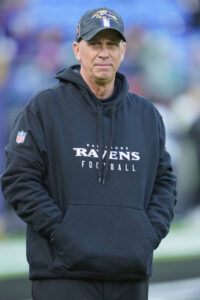 That lofty figure looks to give Baltimore a hard deadline of March 3 — when the 2026 tag application window closes — to have a deal done with Linderbaum. Even with the Ravens being known to hoard compensatory picks, it would surprise if the team passed on Linderbaum’s prime. Paying for it will be costly, however, as Humphrey and Jurgens have placed the career-long Ravens starter in commanding position.
That lofty figure looks to give Baltimore a hard deadline of March 3 — when the 2026 tag application window closes — to have a deal done with Linderbaum. Even with the Ravens being known to hoard compensatory picks, it would surprise if the team passed on Linderbaum’s prime. Paying for it will be costly, however, as Humphrey and Jurgens have placed the career-long Ravens starter in commanding position.
Monken’s extension ensures continuity for Baltimore, though this could be his last season with the team. The third-chance NFL OC oversaw Jackson’s 2023 MVP season and his first-team All-Pro 2024 campaign. Given the league’s interest in offense-oriented coaches, Jackson staying on course will assuredly garner Monken considerable interest in 2026.
The Ravens have not seen an OC land a head coaching job since Gary Kubiak took over in Denver in 2015, though they have observed turnover thanks to the 2019 Greg Roman promotion and Roman’s firing bringing in Monken in 2023. While another Ravens OC search could well take place in 2026, the team will attempt to capitalize on Monken’s experience coaching Jackson this season.
Top 10 cap charges for 2025:
- Lamar Jackson, QB: $43.5MM
- Roquan Smith, LB: $23.72MM
- Mark Andrews, TE: $16.91MM
- Nnamdi Madubuike, DT: $16.48MM
- Odafe Oweh, EDGE: $13.25MM
- Marlon Humphrey, CB: $11.98MM
- Kyle Hamilton, S: $8.73MM
- Derrick Henry, RB: $8.5MM
- Kyle Van Noy, EDGE: $6.6MM
- Ronnie Stanley, LT: $5.8MM
The Ravens are loaded on both sides of the ball with several of the league’s best players at their respective positions. None, of course, is more important than Jackson, the two-time MVP who nearly won his third with a brilliant 2024 season. But the pressure is mounting on the 28-year-old quarterback to deliver in the playoffs after the turnover woes struck again in January. The defense, meanwhile, is focused on forcing some takeaways of its own after a drought of such splash plays in recent postseasons.
The Ravens seem to have all the ingredients, along with what might be the most talented roster since Jackson was drafted. But the Chiefs and Bills form imposing roadblocks in the AFC. Baltimore, however, remains a clear Super Bowl contender. The Ravens will make another run at the AFC North crown, hovering as the preseason favorite once again. But their season will ultimately be evaluated by how they perform in the playoffs. Is this the year Jackson finally fulfills his draft-night promise to bring a Lombardi trophy to Baltimore?
